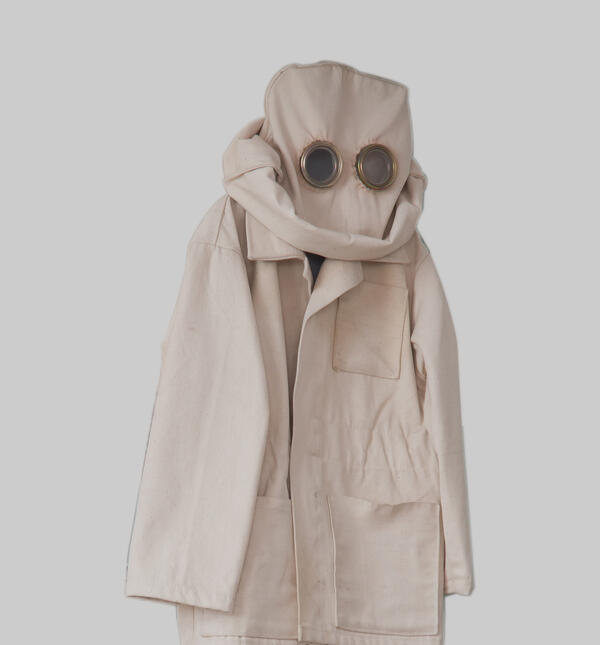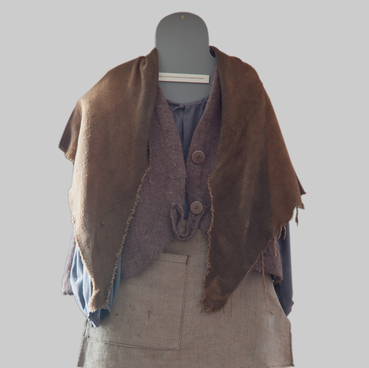On the eve of World War II, plant No. 237 was separated from the BereznikI chemical integrated plant, and in the spring of 1942, the construction of shop No. 7 began at the plant, which was almost the country’s only supplier of scarce raw materials for the defense industry - metallic sodium, which was used for the production of ammunition.
On August 11, 1942, the shop was launched, and until 1946 it was headed by Yakov VerblYUnsky. The workshop was staffed by 14-16-year-old teenagers, graduates of vocational school No. 5, mostly girls. The production process was being mastered on the go. VerblYUnsky himself led the whole process on the day of launch: some of the guys were frightened by the bangs from the production explosions.
The work was hard – there was no mechanization or automation. Caustic, a raw material for the production of caustic sodium alkalis, was brought from the Berezniki soda plant in 190 kilogram drums. The female operators were supposed to use sledgehammers weighing 10 kilograms each to break the caustic into pieces right in the drums. Then the drum was unseamed, and the crushed caustic was loaded into aprons, lifted to the second floor and conveyed to the boilers.
The molten caustic was loaded into baths where metallic sodium was made during the production process. Every hour it was necessary to sample the sodium with a special spoon. For this purpose, it was necessary to open the bath lid, under which hydrogen was accumulating. When opening the lid, explosions occurred, and a meter-long flame burst out, while molten caustic soda could splash out at a temperature of 300 degrees and metallic sodium as well.
The work was hazardous and therefore the overalls were made of extra-thick tarpaulin - canvas impregnated with fireproof or water-repellent and anti-rot compounds. The protective overall consisted of a jacket, trousers, mittens, a hood and metal boots.
The female operators often changed each other, since a long stay in a hot workshop under a dense protective hood was exhausting. They worked 12 hours a day, because due to a lack of fuel, some of the workers set out to collect firewood. Also, there was a repair team in the shop, also consisting of teenagers. Performing all operations only manually, they were ahead of the repair schedule, without leaving the shop for days.
On August 11, 1942, the shop was launched, and until 1946 it was headed by Yakov VerblYUnsky. The workshop was staffed by 14-16-year-old teenagers, graduates of vocational school No. 5, mostly girls. The production process was being mastered on the go. VerblYUnsky himself led the whole process on the day of launch: some of the guys were frightened by the bangs from the production explosions.
The work was hard – there was no mechanization or automation. Caustic, a raw material for the production of caustic sodium alkalis, was brought from the Berezniki soda plant in 190 kilogram drums. The female operators were supposed to use sledgehammers weighing 10 kilograms each to break the caustic into pieces right in the drums. Then the drum was unseamed, and the crushed caustic was loaded into aprons, lifted to the second floor and conveyed to the boilers.
The molten caustic was loaded into baths where metallic sodium was made during the production process. Every hour it was necessary to sample the sodium with a special spoon. For this purpose, it was necessary to open the bath lid, under which hydrogen was accumulating. When opening the lid, explosions occurred, and a meter-long flame burst out, while molten caustic soda could splash out at a temperature of 300 degrees and metallic sodium as well.
The work was hazardous and therefore the overalls were made of extra-thick tarpaulin - canvas impregnated with fireproof or water-repellent and anti-rot compounds. The protective overall consisted of a jacket, trousers, mittens, a hood and metal boots.
The female operators often changed each other, since a long stay in a hot workshop under a dense protective hood was exhausting. They worked 12 hours a day, because due to a lack of fuel, some of the workers set out to collect firewood. Also, there was a repair team in the shop, also consisting of teenagers. Performing all operations only manually, they were ahead of the repair schedule, without leaving the shop for days.



